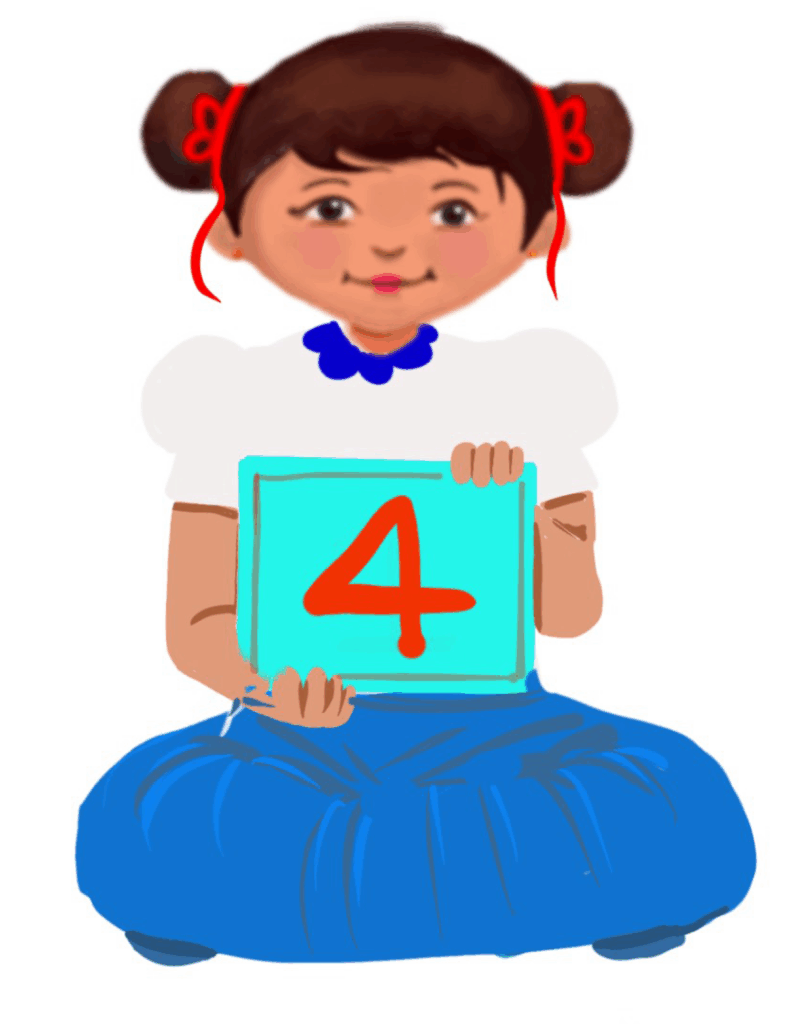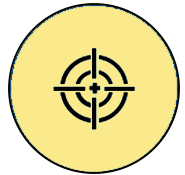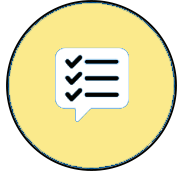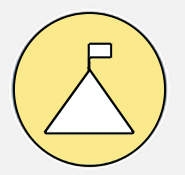
Exploring the World Wide Web
Class 4
 Objective
Objective
Students will…
- understand what the World Wide Web (WWW) is and how it is used.
- learn how to access websites using a web browser.
- recognise important parts of a website (e.g. address bar, links)
- practise safe and responsible internet use.
 Prerequisites
Prerequisites
Basic Computer Skills
- Students should know how to operate a computer or tablet, like turning it ‘on’, using a mouse/trackpad, and basic keyboard skills.
- Students should be familiar with web browsers, such as Chrome, Safari, or Edge.
Familiarity with Internet Concepts:
- Students should understand what the internet is in simple terms (a global network connecting computers).
 Goal
Goal
All
All children will understand what is World Wide Web.
Some
Some children will recognise the parts of a website.
Few
Few children will safely access websites using a web browser.
Operational Definition
All – This gives the goal, which is the minimum that the teacher must achieve for all students in the classroom.
Some – This gives the goal that the teacher may try to achieve for some students in the classroom who can achieve the suggested goal over and above the goal stated for ‘All’.
Few – This gives the goal that the teacher may try to achieve for few students in the classroom who can achieve the suggested goal over and above the goal stated for ‘Some’ and ‘All’.
Materials Required:
Technology
- An audio-enabled computer with an internet connection, smartboard projector, and screen.
- All devices like laptops, tablets and desktop computers with accessibility features enabled.
- Screen readers like JAWS and NVDA.
- Large keyboards, built-in screen magnifiers, hearing aids, text-to-speech and speech-to-text software.
- Voice recognition software like Siri, Windows Speech Recognition, etc.
- Headsets
- Student writing or typing tools.
- Internet access for exploring websites.
Teacher Materials
- Whiteboard and markers or blackboard and chalk.
- Sight word cards, concept cards, and pre-teach vocabulary with meaning cards
- Lesson videos.
Student Handouts
- Handout 1: Communication Cards
- Handout 2: Trace and Learn Card
- Handout 3: Yes or No Cards
- Handout 4: Thumbs Up and Down Card
- Handout 5: Worksheets
Print Preparation
The teacher will print, copy or laminate (wherever applicable)
- Communication Cards for students
- Trace and Learn Cards for students
- Vocabulary Cards for students
- Thumbs up and Thumbs down Card for students
- Yes or No Cards for students
- Sight words cards, Concept cards, pre-teach vocabulary with meaning cards
- Worksheets for students
Preparation for the Activity:
- All the learning and teaching materials needed for this lesson plan must be ready before the lesson begins.
- Ensure that there are enough copies for all children. Multiple copies can be made by photocopying too.
- Please have the assistive technologies and accessibility features ready for your inclusive classroom.
Setup for transacting the lesson:
This topic must be taught in the computer lab.
Notes to the teacher:
Begin the topic by assessing the prior knowledge of the children and pre-teaching the concepts.
1. Expected Prior Knowledge
Awareness of the extent of student’s prior knowledge of the topic will help the teacher plan and deliver the lesson appropriately.
Begin with a discussion:
Who has used the internet before?
What do you do on the internet?
Introduce the idea that the internet is like a giant library with lots of information, and the World Wide Web is how we visit the different pages in that library.
Worksheets, sight words, concept cards, pre-teach vocabulary with meaning cards
Worksheet: Pre-Assessment
Enlarged Worksheet: Pre-Assessment
LTM: Sight Words
LTM: Concept Cards
LTM: Pre-teach vocabulary with meaning cards
2. Warm-Up
Write the sentence ‘World Wide Web’ on the board.
Ask students to write down the first word that comes to mind when thinking of ‘World Wide Web’.
Possible Answers: internet
DIFFERENTIATION
- Students can write down answers in their notebooks or on a slip of paper and stick it on the corkboard.
- Students can choose to write their answers or communicate their responses verbally with a friend/teacher.
- Students can draw the word or point to the picture on the Communication Card (a Communication Card handout should be provided).
- The teacher should immediately praise the student with his/her name and reward the child.
Worksheets and Communication Cards:
Worksheet: Vocabulary
Enlarged Worksheet: Vocabulary
Worksheet: Trace and Learn
Enlarged Worksheet: Trace and Learn
LTM: Thumbs Up and Down Card
LTM: Yes or No Cards
3. World Wide Web
Project a web browser (e.g. Chrome) on the screen and show the students how to:
- Type a URL in the address bar (e.g. Google, Yahoo).
- Click links to move between web pages.
- Use the ‘back’ button to return to the previous page.
Guided Watching
Bring the attention of the students to the screen and say, “Let’s watch this video.”
Ask students to give a ‘thumbs up’ whenever they hear or see the word ‘World Wide Web’ in the video.
Play the video
Video: World Wide Web
Video: World Wide Web with ISL
Informal Assessment (After playing the video)
1. Ask, “What is the World Wide Web?”
If needed, prompt the children to come up with a definition using language from the video.
Example:
Write the question and definition on the board after student responses.
3. Ask, “Does ‘WWW’ mean World Wide Web?”
4. Ask, “Does a webpage contain text, images, sound, and videos?”
5. Ask, “Do we use a web browser to access the World Wide Web?”
6. Ask, “Did Sir Tim Berner’s-Lee invent the World Wide Web?”
Worksheet: Informal Assessment
4. Let’s Explore the Web
Aim: To explore the web.
Materials required:
- An audio-enabled computer with an internet connection, smartboard projector, and screen.
- All devices such as laptops, tablets and desktop computers with accessibility features enabled.
- Internet access for exploring websites.
Setting for the activity: Group/ Individual activity/Indoor
Role of the Teacher: Facilitator
Procedure:
- Have students work in pairs or individually on computers/tablets.
- Provide them with a safe, pre-selected list of child-friendly websites (e.g. National Geographic Kids, BBC Kids).
- Assign tasks like:
- Typing a website address in the browser.
- Finding specific information using the search bar.
- Clicking on the links to explore different sections of the website.
5. Homework
Website Activity:
- Assign students a fun task, like finding an interesting animal on a child-friendly science website and reporting on a fact they learned.
- Provide guidance and support as needed, encouraging safe web browsing habits.
6. Assessment
Review Key Vocabulary:
- Go over the terms learned: World Wide Web, web browser, URL, link.
- Ask the class to answer questions like: “What do we use to visit websites?” and “How do we go back to the previous page?”
Class Discussion:
- Discuss the importance of being safe online. Emphasise that students should always tell a trusted adult if they see something on the internet that makes them uncomfortable.
Exit Ticket:
- Ask each student to write or draw one thing they learned about the World Wide Web or how to use a web browser.
Worksheet: Exploring the World Wide Web
Enlarged Worksheet: Exploring the World Wide Web
Wordwall: Exploring the World Wide Web
7. Assistive Technologies and Adaptive Devices
Assistive Technologies and Adaptive Devices
Teacher Resource Document
| Source and Attribution of images: All images used in the above Assets and Aids are originally created. |
| This digital material has been developed by the Sri Sathya Sai Vidya Vahini Inclusive Education Project, a unit of Sri Sathya Sai Central Trust, Prasanthi Nilayam, as a collaborative offering in the service of our nation. |